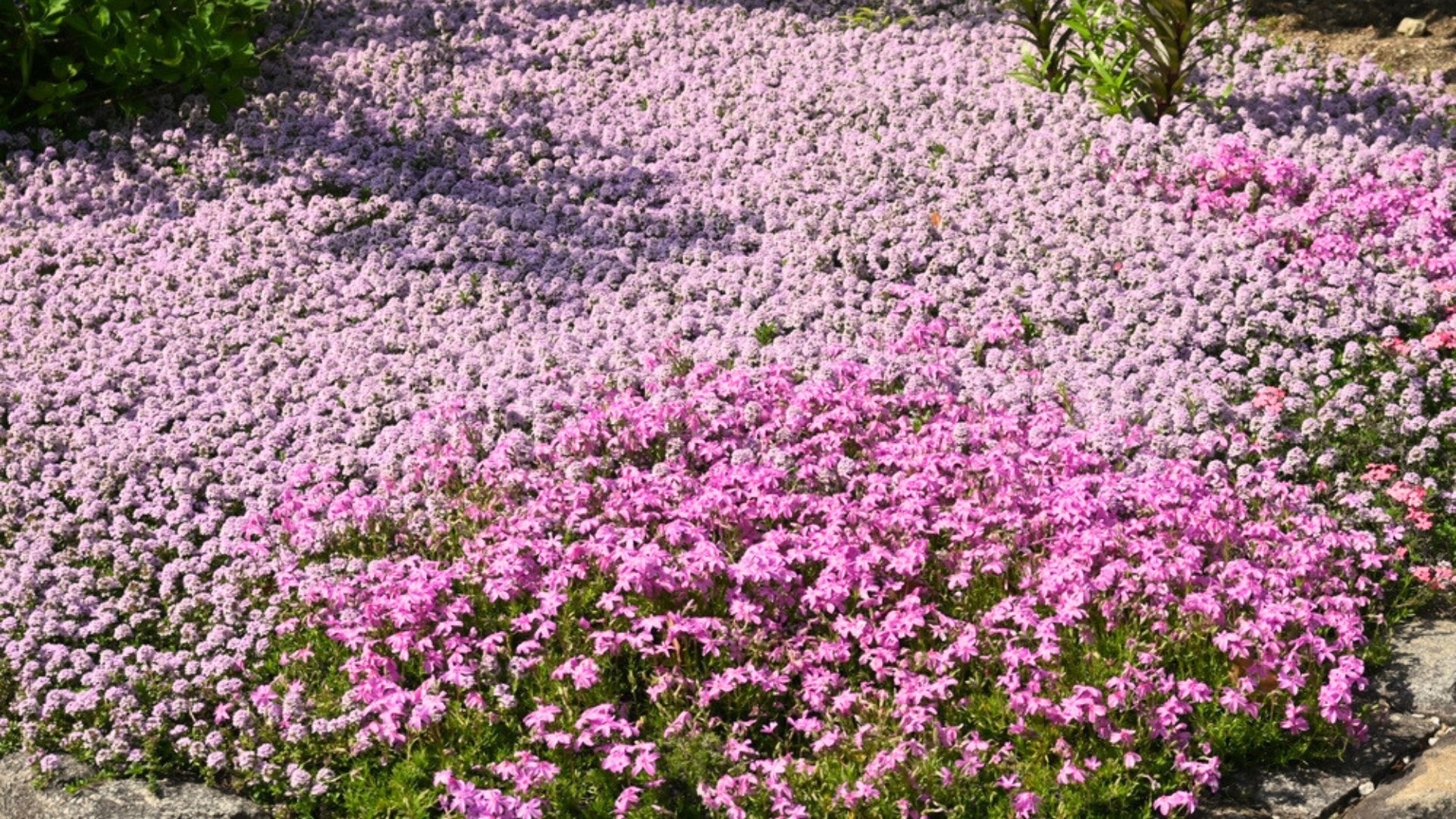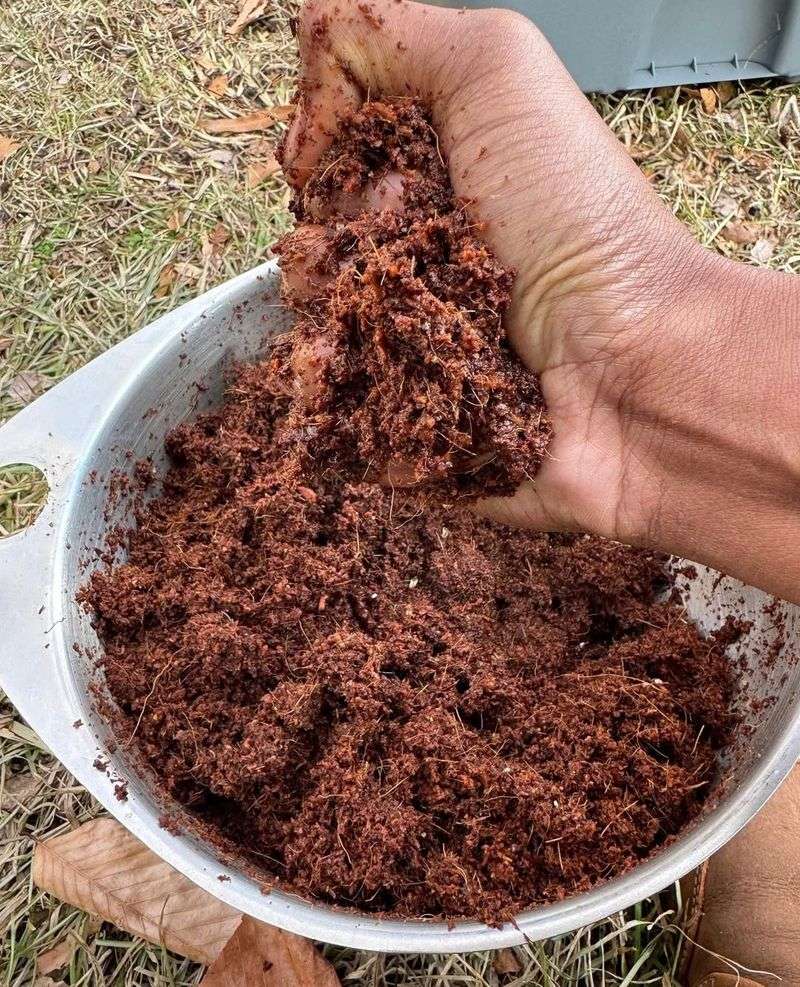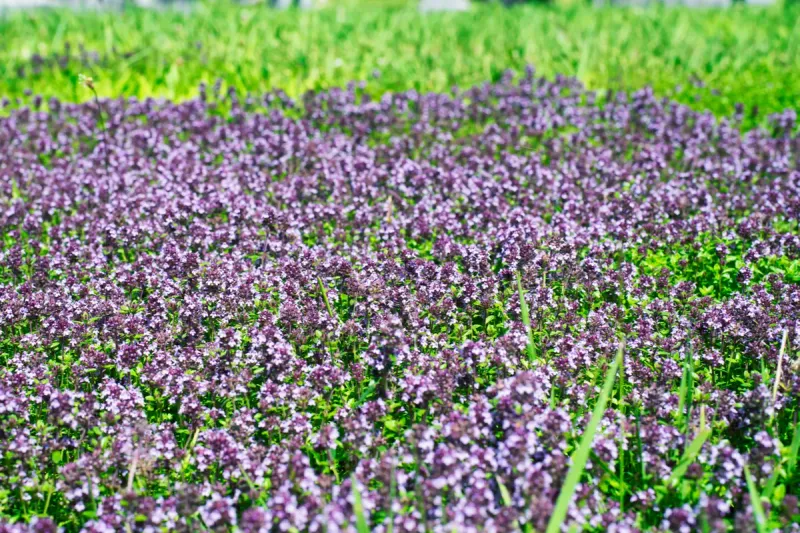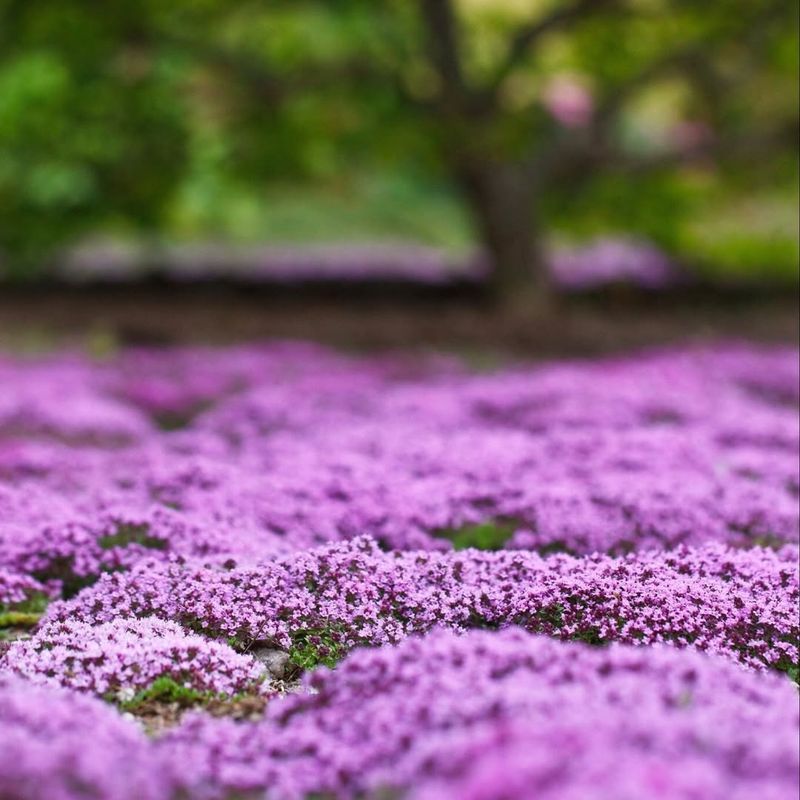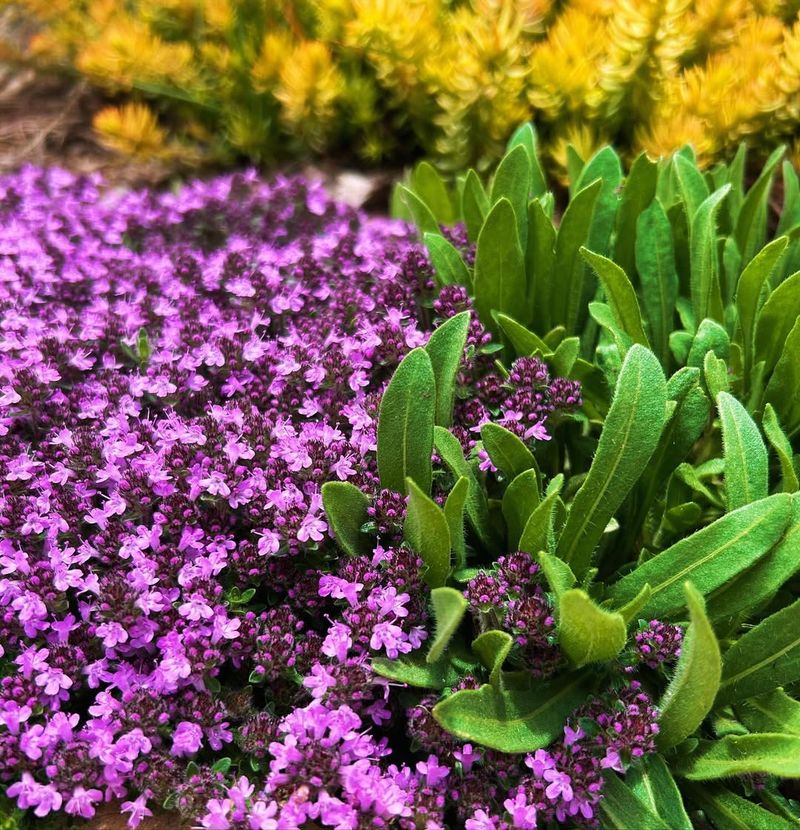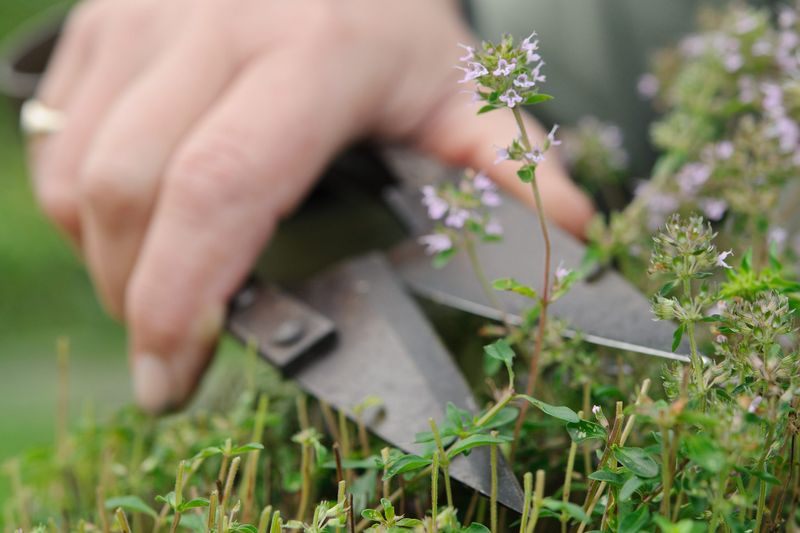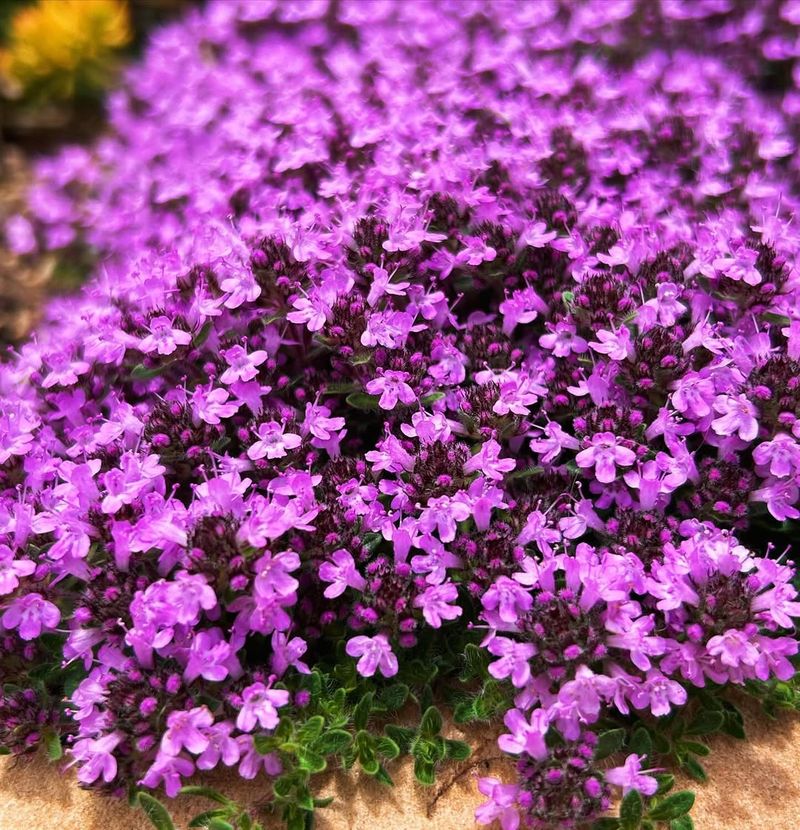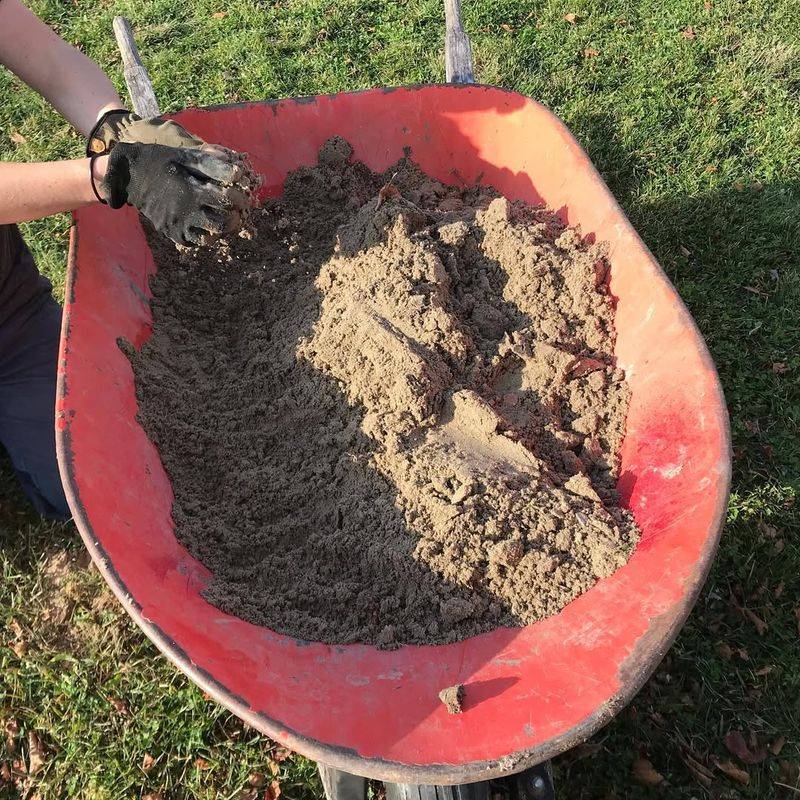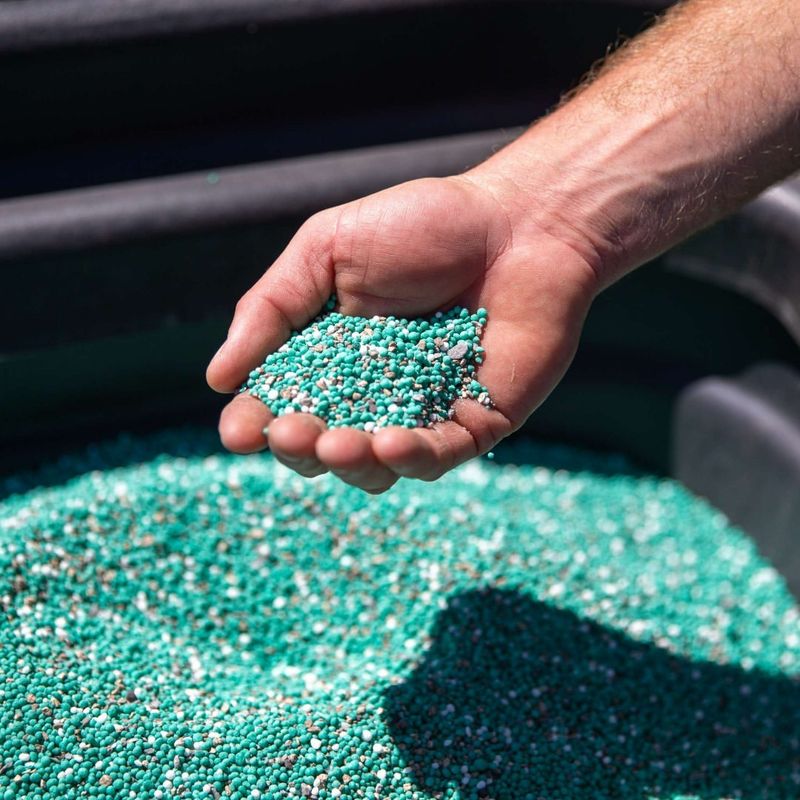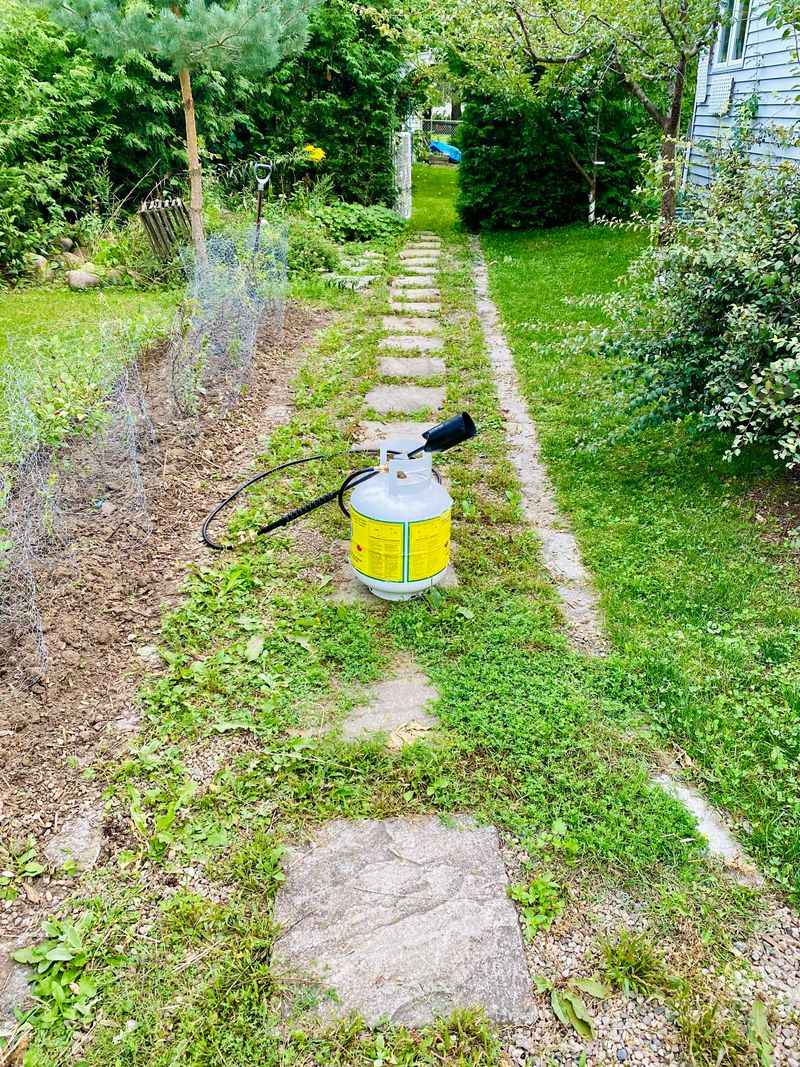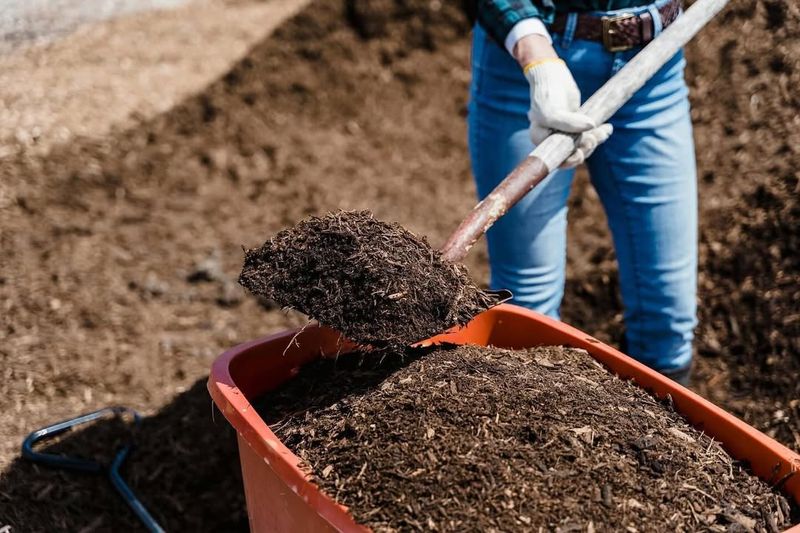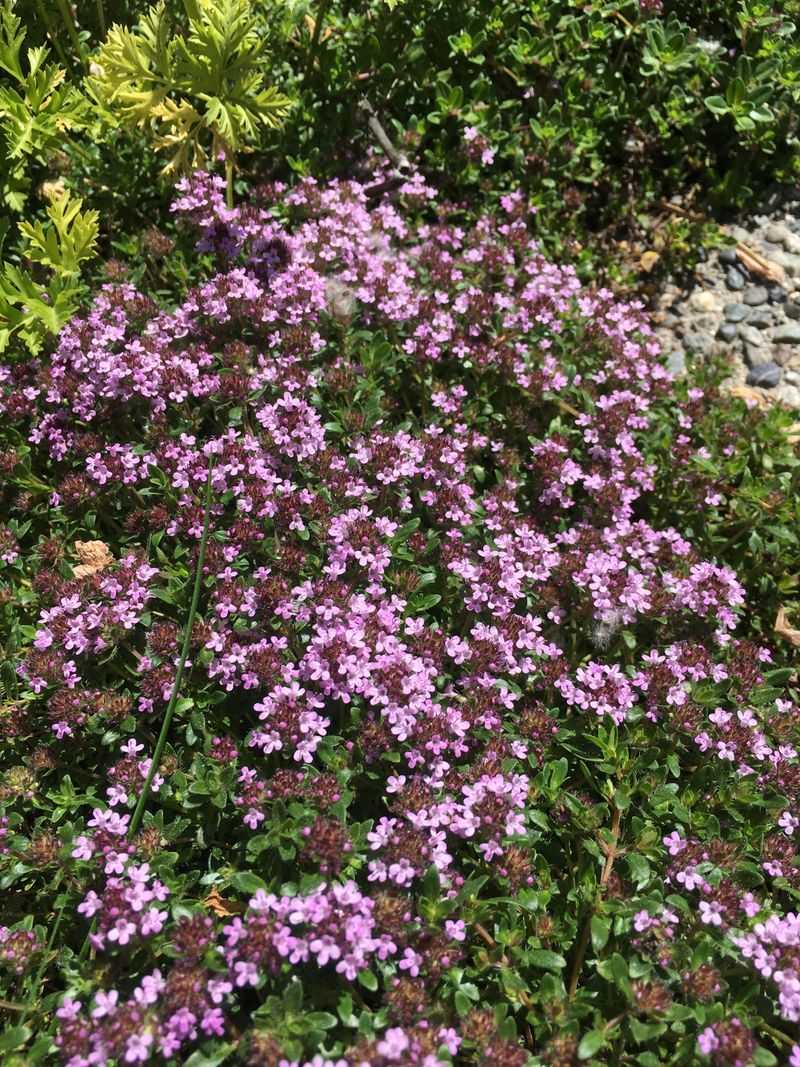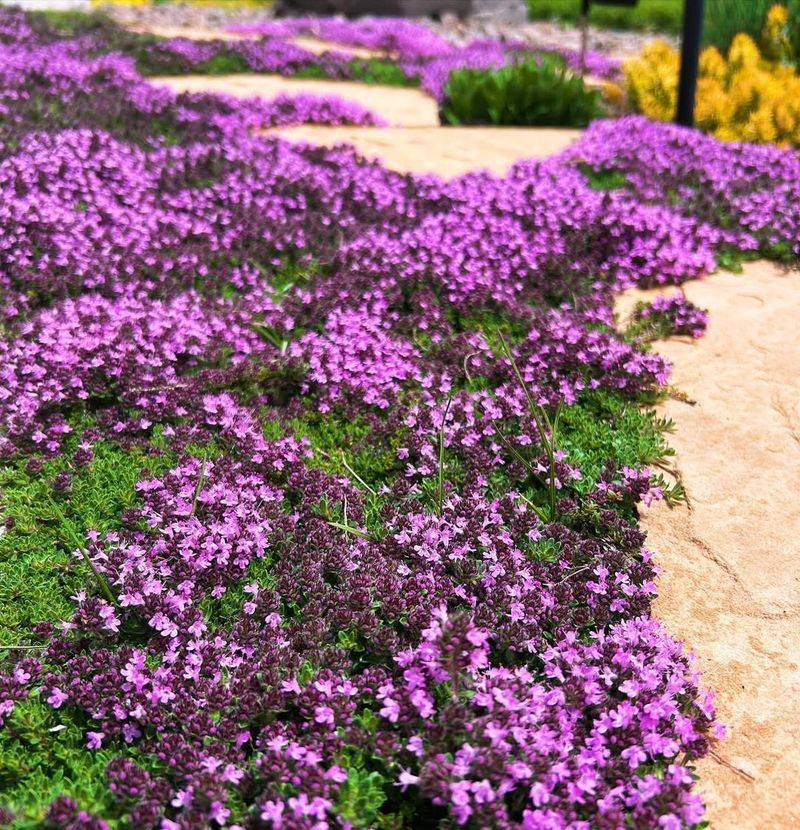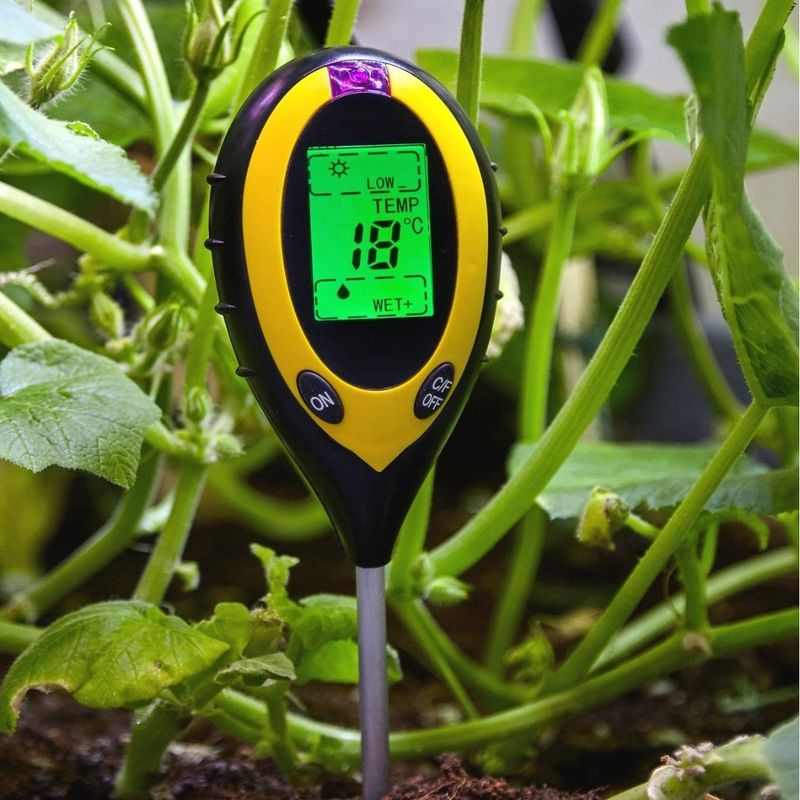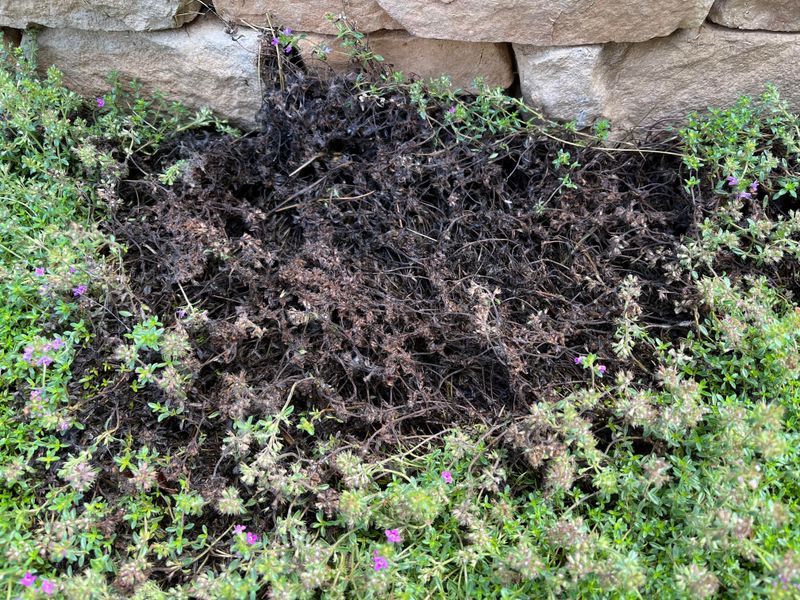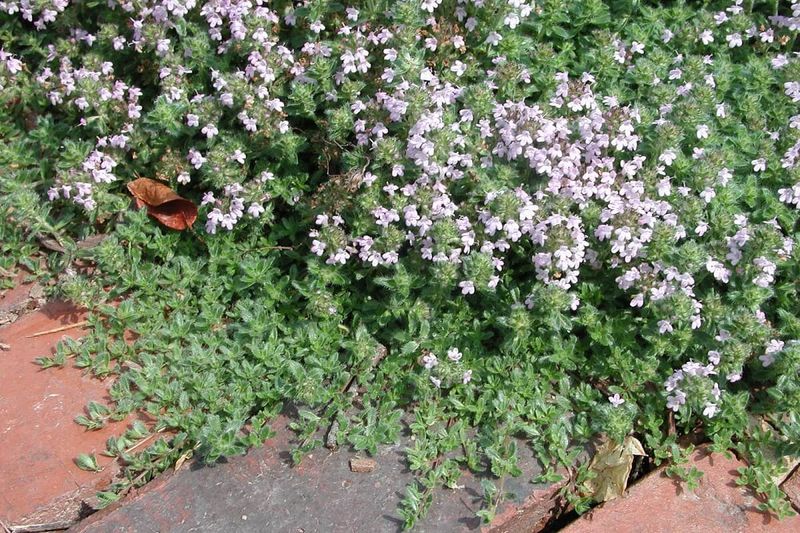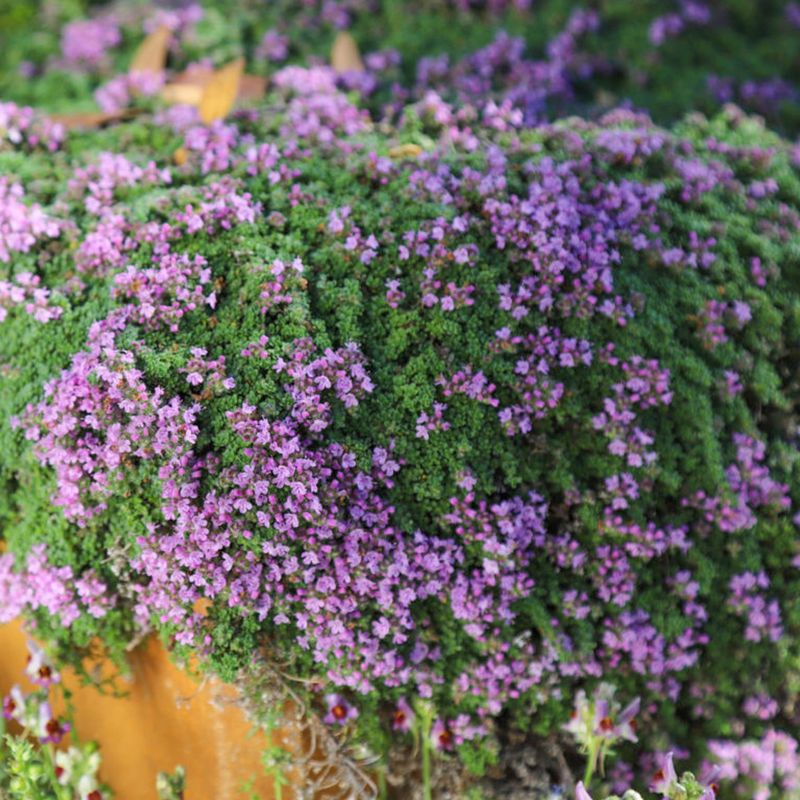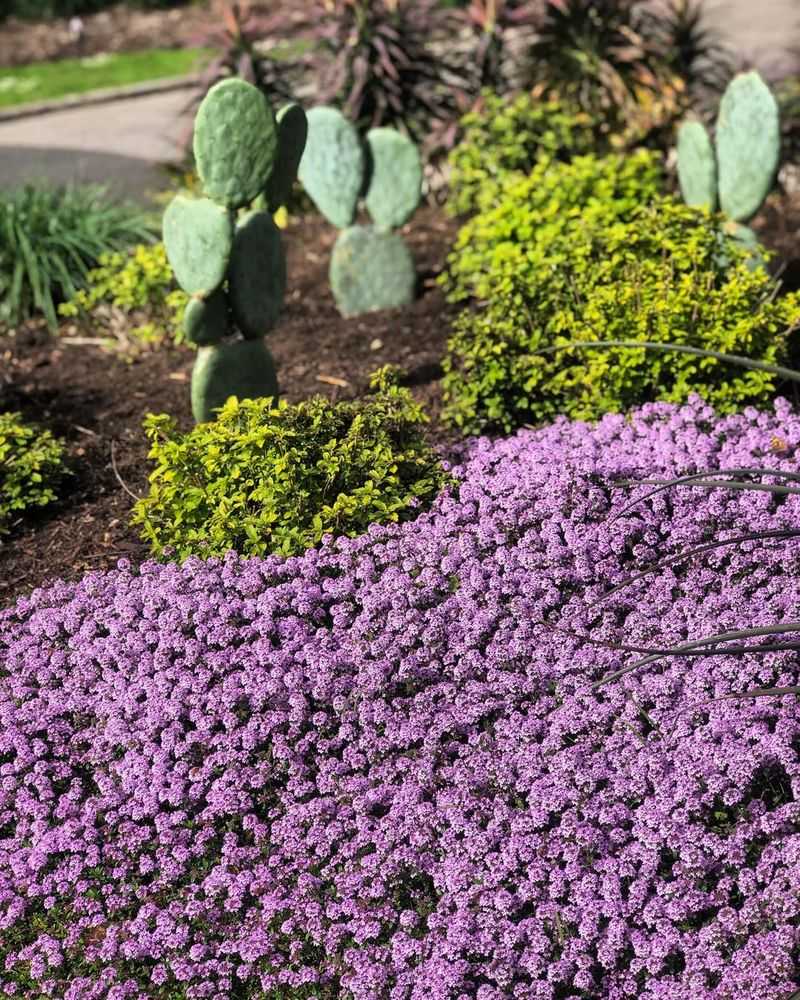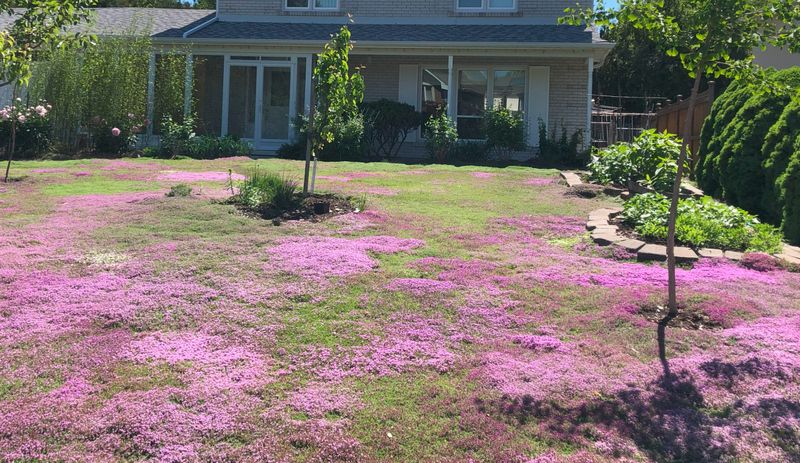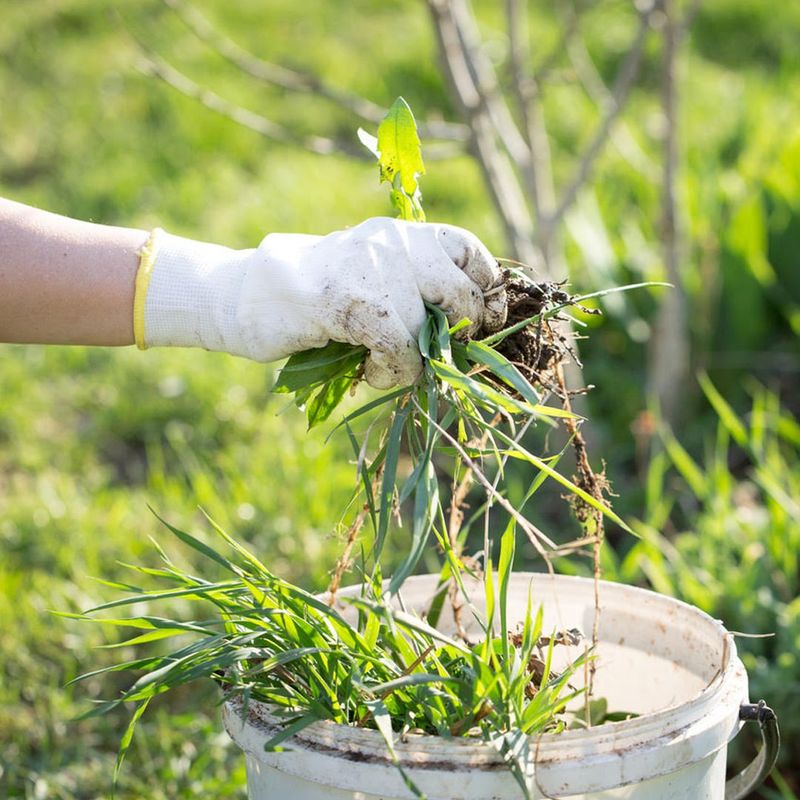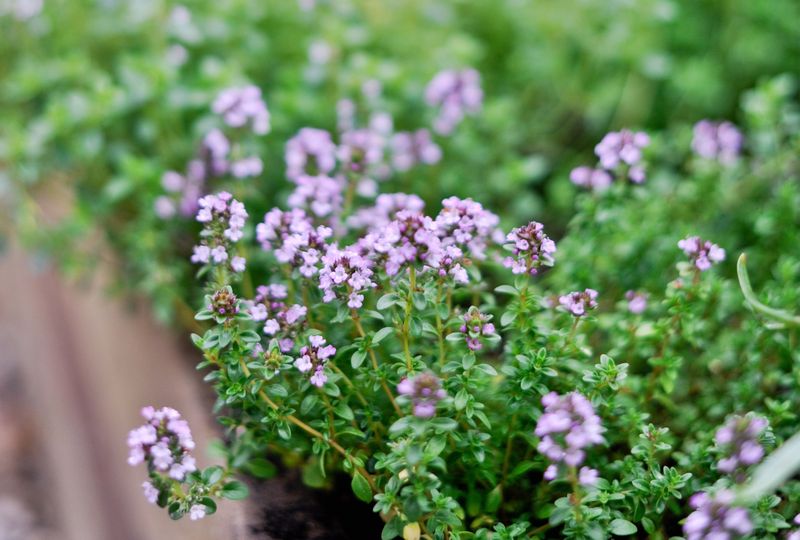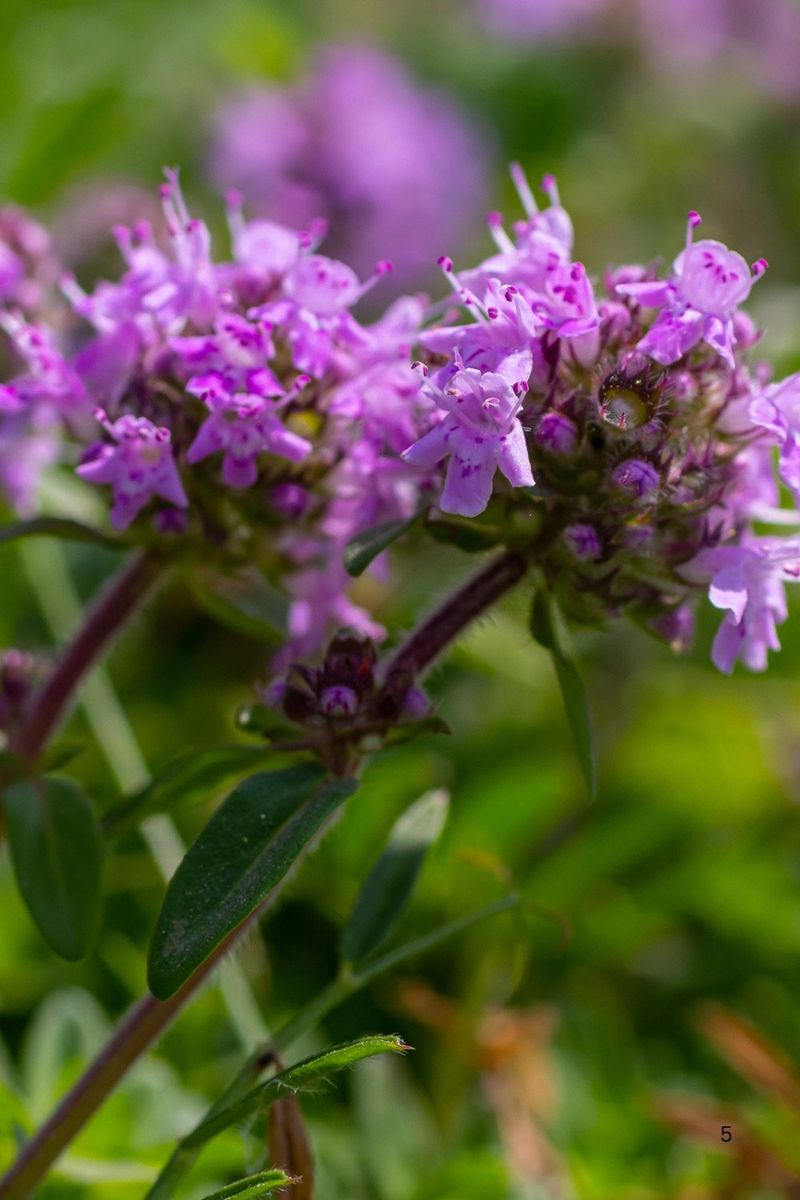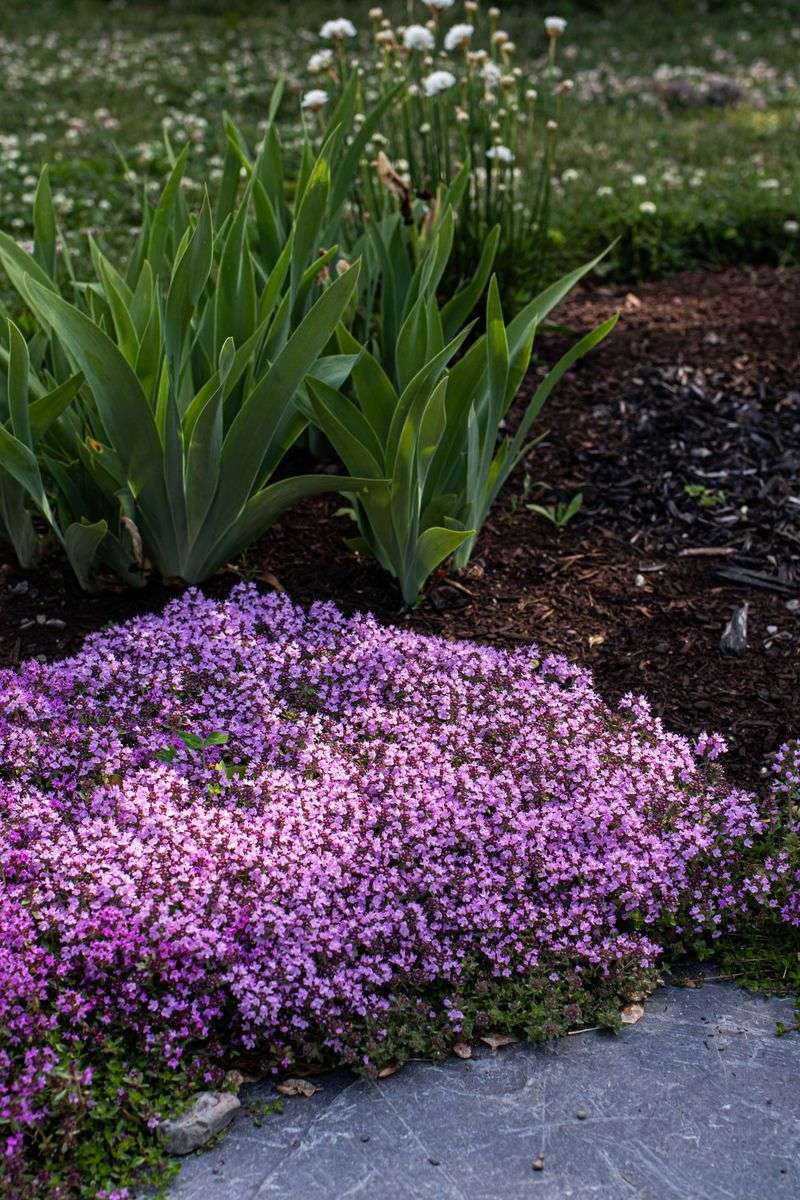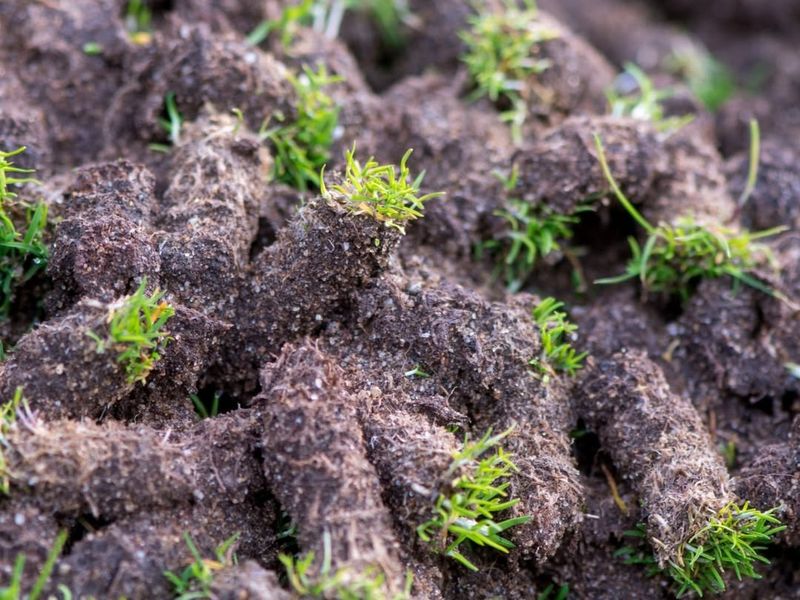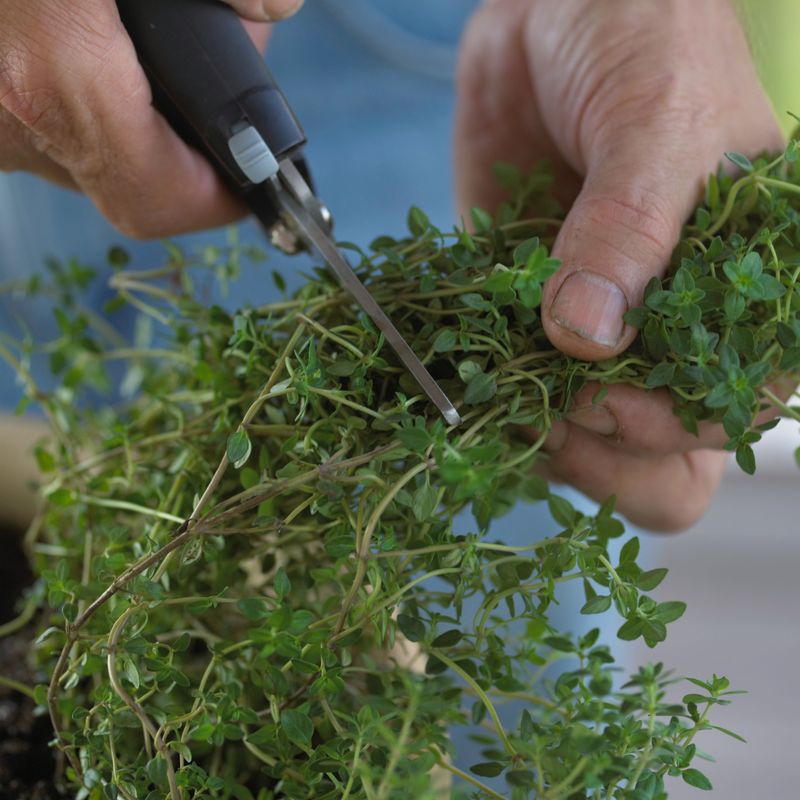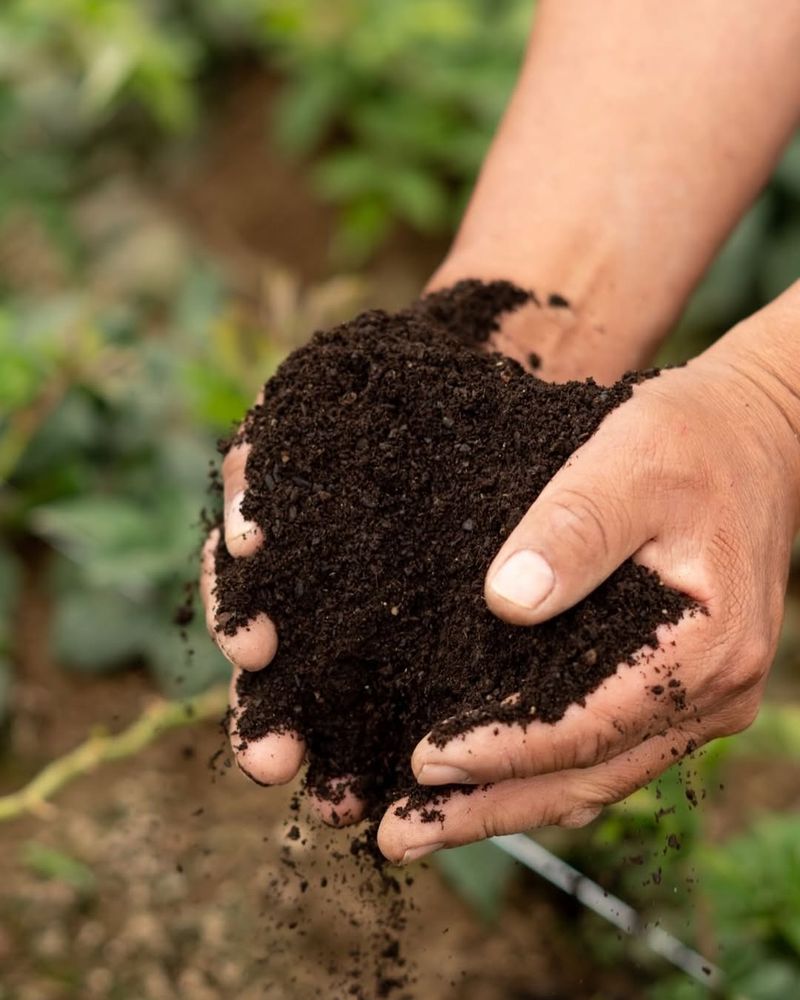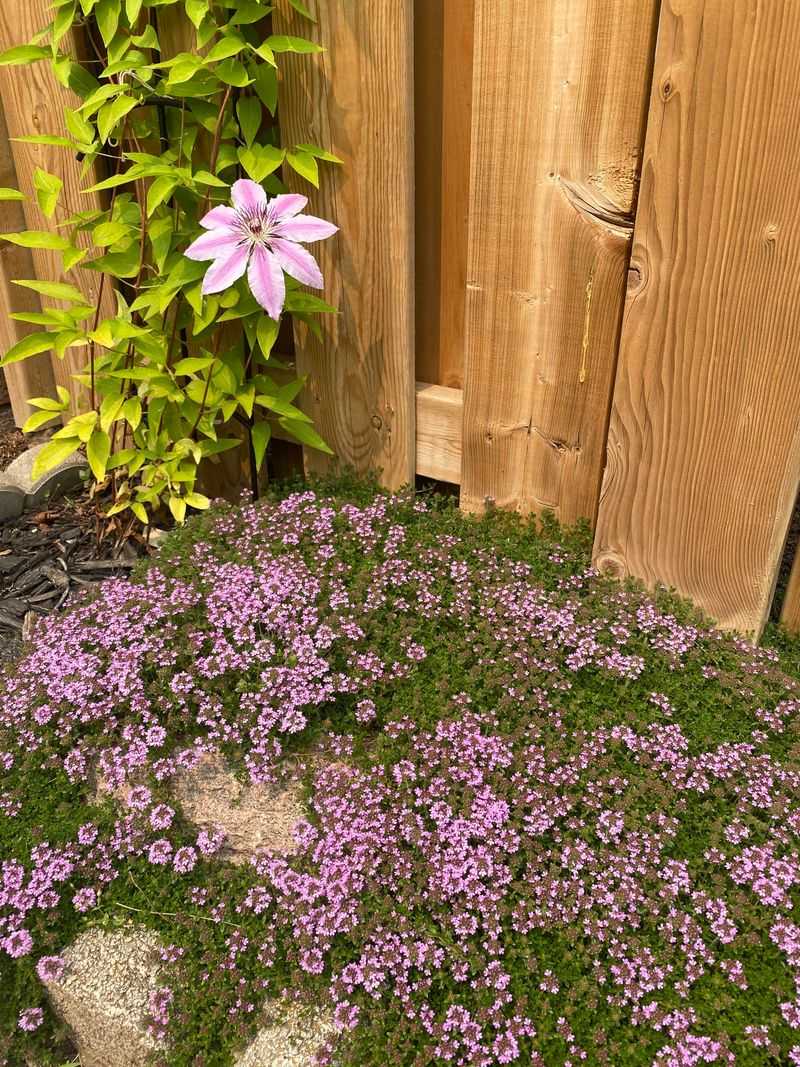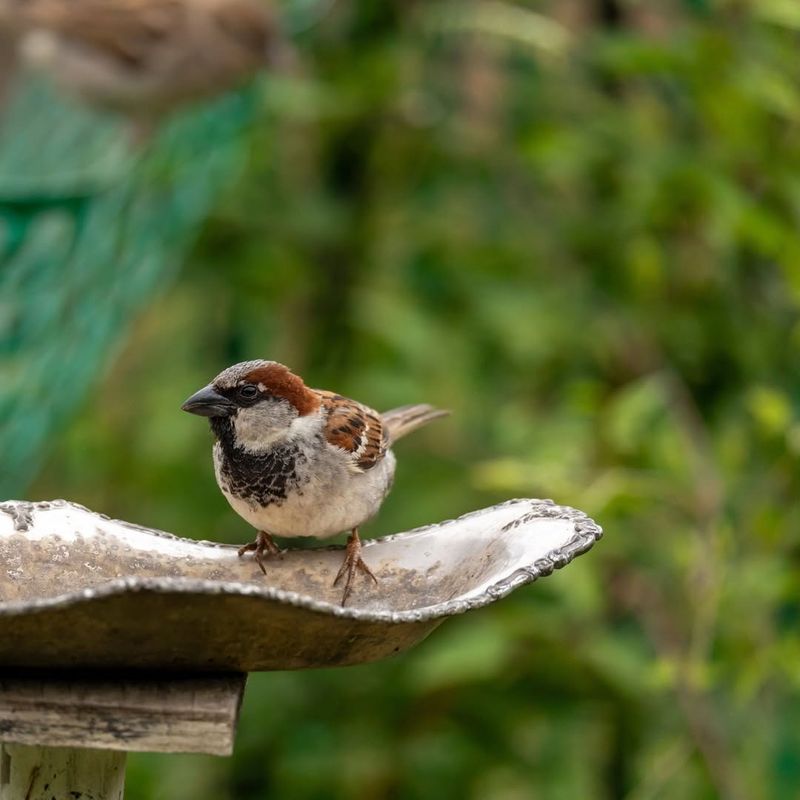Fragrant creeping thyme sounds like the perfect ground cover—and it can be, if you know what you’re doing. It’s low-growing, smells amazing, and fills in spaces beautifully. But even an easygoing plant like this comes with a few pitfalls.
From poor placement to overwatering, small mistakes can lead to patchy growth or sad-looking thyme. Before you start planting, check out these 30 common mistakes to avoid so your creeping thyme stays lush, healthy, and thriving.
1. Planting in Poor Soil
When setting up your garden, remember that not all soils are created equal. Fragrant creeping thyme, a delightful ground cover, demands well-draining soil to thrive. While rocky, poor earth might seem rustic, it won’t do your thyme any favors.
Dividing your thyme into smaller sections can help, but start by amending the soil with organic matter. Better yet, test your soil pH to ensure it’s mildly alkaline for optimal growth. Your thyme will thank you by flourishing.
2. Overwatering
Imagine pouring too much love into your garden, only to drown it. Creeping thyme, in particular, is not fond of soggy feet. Overwatering can lead to root rot, which can devastate your aromatic ground cover. Instead, focus on the mantra: less is more.
Ensure your thyme receives proper drainage and water it sparingly. A little thirst won’t hurt and will make your thyme more resilient. Remember, it’s a ground cover, not a swamp plant.
3. Ignoring Sunlight Needs
Lighten up your garden plans by considering the sun. Fragrant creeping thyme, while a ground cover, thrives under full sunlight. Placing it in the shade will only lead to disappointment and sparse growth. Identify sunny spots in your garden for this vibrant herb.
Dappled sunlight may do in a pinch, but direct exposure is key. By understanding its sun-loving nature, your thyme will spread joy and fragrance across your garden. Don’t leave it in the dark!
4. Crowding Plants Together
Here’s the thing about personal space: even plants need it. When you cram creeping thyme too close, you’re inviting trouble. This aromatic ground cover prefers a bit of breathing room to spread its wings, or roots.
Space your plants adequately to avoid stunted growth and poor air circulation. The result? A healthier, happier garden. By giving thyme ample room, you’re also making maintenance easier. After all, a crowded garden is a tangled mess.
5. Neglecting Regular Trimming
Think of your thyme plants like a haircut overdue. Regular trimming keeps creeping thyme looking its best. This ground cover benefits from a good snip to promote new growth and maintain its shape.
Forgetting to trim can lead to unruly, woody growth that’s less appealing. Embrace the shears and snip away dead or unruly sections. Your thyme will reward you with a plush carpet of fragrance. Plus, it’s a great excuse to spend more time in the garden.
6. Wrong Planting Season
Timing is everything, especially in gardening. Planting creeping thyme during the wrong season can lead to failure. This ground cover thrives when planted in spring or early summer, giving it time to establish before winter.
Avoid the temptation to plant during suboptimal times like late fall or winter. The results are often lackluster, with plants struggling to survive. By aligning with nature’s schedule, you’ll enjoy a lush, fragrant thyme ground cover.
7. Ignoring Pest Control
In the world of gardening, uninvited guests are a major faux pas. Creeping thyme, though resilient, can fall victim to pests if ignored. Aphids and spider mites might find your thyme a tasty treat. Regular checks and integrated pest management keep these critters at bay.
Natural predators, like ladybugs, are a gardener’s allies. By keeping pest control on your radar, your thyme stays healthy and vibrant. Remember, it’s easier to keep pests out than to evict them.
8. Planting in Heavy Clay Soil
Bricks are for building, not for planting thyme. Heavy clay soil is a no-go for creeping thyme. This ground cover demands well-drained, light soil. To amend clay, incorporate organic matter or sand to improve drainage.
A little prep work can save your thyme from suffocating roots and poor growth. Your efforts will be rewarded with a thriving, aromatic spread. Avoiding clay’s pitfalls ensures a vibrant garden that invites compliments, not criticism.
9. Neglecting Fertilization
Even the most minimalistic ground cover needs a nutrient boost now and then. Creeping thyme benefits from occasional fertilization. Neglect this, and your thyme might look a bit under the weather. Opt for a balanced, slow-release fertilizer to provide nutrients over time.
This ensures consistent growth and a lush appearance. However, don’t overdo it; you’re aiming for healthy, not bloated plants. With a little care, your thyme will thrive with vigor.
10. Planting in Low Traffic Areas
Ground cover is meant to be seen and enjoyed, not hidden in a corner. Creeping thyme is perfect for areas where you walk, releasing its fragrance with every step. Avoid planting it in seldom-used spaces, as its potential goes unnoticed.
Choose pathways, or spots around seating areas, to maximize its aromatic benefits. By placing thyme in high-traffic spots, you’re creating a sensory delight that enhances your garden’s ambiance. Don’t let it languish unseen.
11. Using Chemical Weed Killers
In the battle against weeds, not all weapons are wise choices. Chemical weed killers can harm your creeping thyme, despite their efficacy against unwanted plants. Opt for manual weeding or organic solutions to preserve this aromatic ground cover.
A little elbow grease goes a long way in maintaining your thyme’s health. Chemical solutions may seem quick, but the long-term damage isn’t worth it. Choose a safer route to keep your thyme thriving and your conscience clear.
12. Failing to Provide Mulch
A little extra coverage can make a world of difference. Mulch isn’t just for looks; it helps retain moisture and suppress weeds, aiding your creeping thyme’s growth. Failing to mulch leaves your thyme exposed to temperature extremes and moisture loss.
Choose organic mulch to complement your garden’s ecosystem. It’s like a cozy blanket for your plants, keeping them snug and thriving. Don’t underestimate the power of a good mulch in achieving a stunning ground cover.
13. Incorrect Spacing
In the world of gardening, space is as valuable as gold. Incorrectly spacing your creeping thyme can lead to overcrowding, which stifles growth. This aromatic ground cover needs enough room to breathe and spread.
Follow planting guidelines for optimal spacing, ensuring your thyme has a fighting chance. Proper spacing encourages healthy development and a more uniform appearance. By laying out your thyme with care, you’re setting the stage for a lush, thriving garden.
14. Planting in Frost-Prone Areas
Frost and creeping thyme don’t mix well. Planting in frost-prone areas can spell disaster for your aromatic ground cover. This herb thrives in temperate climates, so pick locations wisely. If frost is unavoidable, consider protective measures like row covers.
By taking precautions, you’re safeguarding your thyme’s future. A little foresight saves you from the heartbreak of frost-damaged plants. Remember, keeping your thyme warm means a more prosperous, aromatic garden.
15. Ignoring pH Levels
Get to know your soil better before planting. Ignoring soil pH levels can be a costly mistake for creeping thyme. This ground cover prefers a slightly alkaline environment to thrive. Testing your soil’s pH can inform necessary adjustments, like adding lime for acidic soil.
Proper pH balance encourages healthy thyme growth and fragrance. By understanding your soil’s needs, you’re giving your thyme the best chance to flourish. In gardening, knowledge truly is power.
16. Failing to Remove Dead Leaves
Nobody enjoys a cluttered space, not even your plants. Allowing dead leaves to accumulate on your creeping thyme is a recipe for disease and poor growth. Regularly clear debris to keep your thyme breathing easy and looking its best.
This simple task can prevent fungal growth and promote healthier plants. Think of it as tidying up your garden to enhance its beauty. With a little effort, your thyme will remain vibrant and inviting all season long.
17. Not Considering Companion Plants
Choosing friends wisely applies to gardens too. Ignoring companion planting can affect your creeping thyme’s success. Pair it with plants that thrive in similar conditions, like lavender or rosemary. Avoid those that compete for resources or create too much shade.
Proper companionship leads to a harmonious and thriving garden. By considering plant pairings, you’re fostering an environment where all your plants can shine. Your thyme will flourish alongside suitable companions.
18. Neglecting Winter Protection
Cold weather can be brutal, even for hardy plants. Creeping thyme benefits from winter protection to ensure its survival. Ignoring this can leave your ground cover vulnerable to freezing temperatures. Consider mulching or using frost covers to shield your thyme.
Taking these steps helps preserve your plants’ vitality through the chill. With a little preparation, your thyme will bounce back come spring, ready to spread its fragrance anew. Winter woes be gone!
19. Overcrowding with Other Plants
In the realm of gardening, too much of a good thing can go awry. Overcrowding creeping thyme with other plants limits its growth and potential. This aromatic ground cover needs space and sunlight to flourish. Balance is key; ensure thyme has its share of resources.
Strategically plant to allow each species room to breathe and grow. By avoiding overcrowding, you’re nurturing a harmonious garden where thyme can truly shine. Less crowding means more thriving.
20. Ignoring Drainage Needs
Water can be a gardener’s friend or foe. Ignoring drainage needs spells trouble for creeping thyme. This ground cover craves well-drained soil to avoid waterlogged roots. Ensure your planting area allows excess water to escape easily.
Amend soil with sand or organic matter if necessary. Proper drainage promotes healthy root development and lush growth. By prioritizing drainage, you’re setting your thyme up for success. Remember, soggy roots lead to soggy results!
21. Neglecting to Remove Weeds
Weeds are the uninvited party crashers of the garden. Letting them mingle with your creeping thyme is a no-no. Regular weeding is essential to give thyme the spotlight it deserves. Weeds compete for nutrients and space, hindering thyme’s growth.
By staying on top of weed control, you’re ensuring your ground cover thrives. A weed-free garden means your thyme can bask in all its aromatic glory. Don’t let weeds steal the show.
22. Overfertilizing
More isn’t always merrier in gardening. Overfertilizing creeping thyme can lead to lush growth that’s more susceptible to disease. This ground cover prefers a balanced, moderate approach to feeding. Use fertilizer sparingly, focusing on slow-release options.
Too much can result in nutrient burn or water imbalances. A light hand ensures your thyme remains healthy and vibrant. By avoiding overfertilization, you’re nurturing a resilient and thriving garden. Remember, moderation is key.
23. Ignoring Seasonal Changes
The seasons change, and so should your gardening practices. Ignoring seasonal needs can affect creeping thyme’s health. Adjust care routines to align with weather variations. Provide shade during scorching summers and protection in cold winters.
Season-specific adjustments promote resilience and prolonged beauty. Your thyme will adapt to each season’s demands with your guidance. By observing nature’s cues, you’re ensuring a thriving garden year-round. Stay attuned to the rhythms of nature.
24. Planting in Deep Shade
Darkness is no friend to creeping thyme. Planting in deep shade can stifle your aromatic ground cover’s growth. This herb thrives in sunlight, making shaded spots unsuitable. Choose locations with ample sun exposure for best results.
If shade is unavoidable, ensure it’s dappled or partial at most. By honoring its sun-loving nature, you’re setting your thyme up for success. Avoiding deep shade ensures your garden remains vibrant and fragrant.
25. Neglecting Soil Aeration
Compacted soil is like a straitjacket for your plants. Creeping thyme requires aerated soil to grow vigorously. Ignoring this need can lead to stunted growth and poor health. Regularly aerate the soil to enhance root development and nutrient absorption.
Tools like a garden fork or aerator can help. By giving your thyme room to breathe, you’re promoting a lush and healthy ground cover. Aeration is the breath of fresh air your garden needs.
26. Failing to Prune Before Winter
Winter is coming, and your thyme needs to prepare. Failing to prune creeping thyme before winter can lead to damage and poor regrowth. Trim back growth in late fall to ready your plants for winter dormancy.
Pruning removes dead or weak sections, encouraging healthy spring growth. By preparing your thyme for the cold, you’re ensuring a vibrant return when the warmth arrives. Give your thyme the trim it needs to weather winter’s chill.
27. Ignoring Soil Compaction
Heavy footsteps can take a toll on your garden. Ignoring soil compaction affects creeping thyme’s growth. This ground cover thrives in loose, airy soil. Prevent compaction by limiting foot traffic and using pathways. Mulching can also alleviate compacted soil.
By addressing compaction, you’re fostering a healthier environment for your thyme. Light, fluffy soil encourages robust root development and vigorous growth. Avoid compaction for a thriving, aromatic garden.
28. Planting Too Shallow
Depth matters, even for ground cover. Planting creeping thyme too shallow exposes roots to elements, risking damage. Ensure your thyme is planted at the right depth to support healthy growth. Roots should be covered adequately, with soil gently pressed around them.
Proper planting depth provides stability and protection. By planting at the correct depth, you’re giving your thyme a solid foundation. Avoid shallow planting to keep your garden blooming beautifully.
29. Ignoring Wildlife Threats
Gardens are a buffet for wildlife, but they can be choosy eaters. Ignoring wildlife threats can impact creeping thyme’s health. Deer, rabbits, and other critters might find your thyme irresistible. Consider protective measures like fencing or deterrents.
By addressing wildlife concerns, you’re safeguarding your ground cover from unwanted munching. A little defense goes a long way in maintaining your garden’s integrity. Preserve your thyme’s charm by keeping critters at bay.
30. Not Adapting to Local Climate
One size doesn’t fit all, especially in gardening. Failing to adapt creeping thyme to your local climate can hinder its success. Research your area’s conditions and adjust care practices accordingly.
This herb thrives in temperate climates, but with adjustments, it can grow elsewhere. Understand your climate’s quirks to ensure thyme’s prosperity. By aligning with your local environment, you’re nurturing a garden that thrives with local flair. Tailor your care for thyme’s success.

